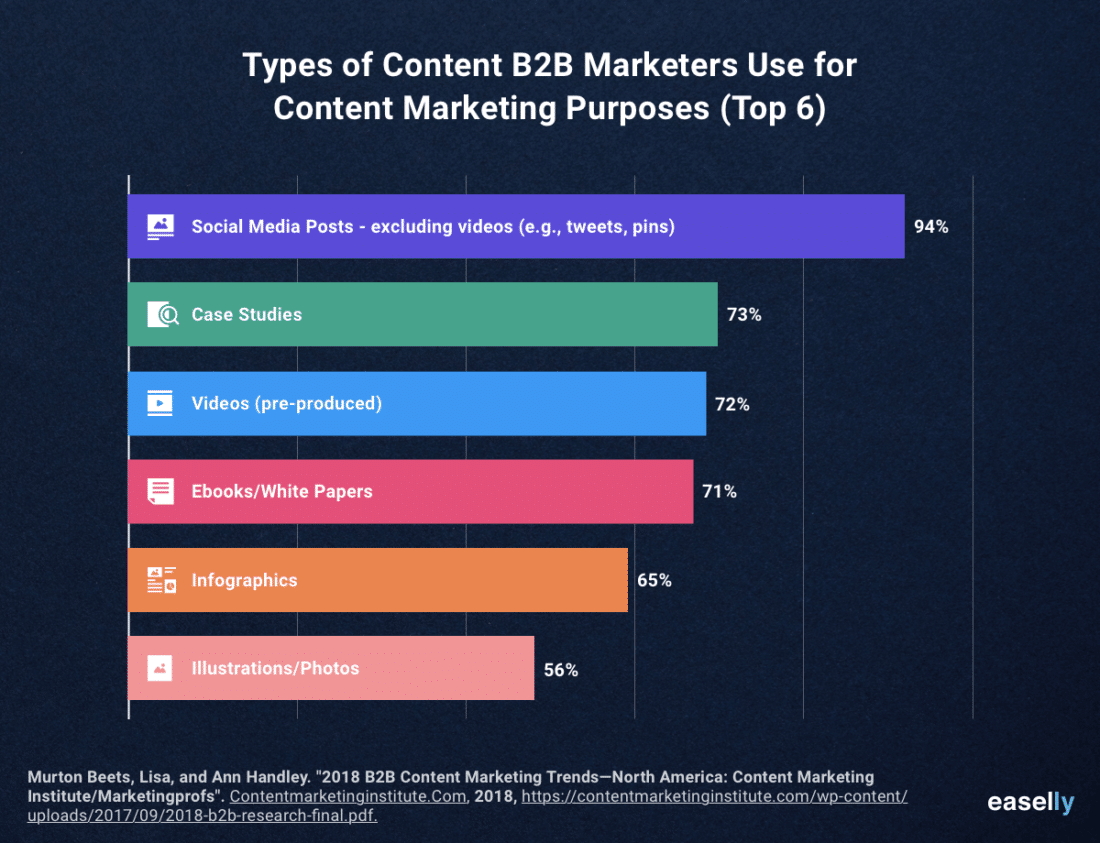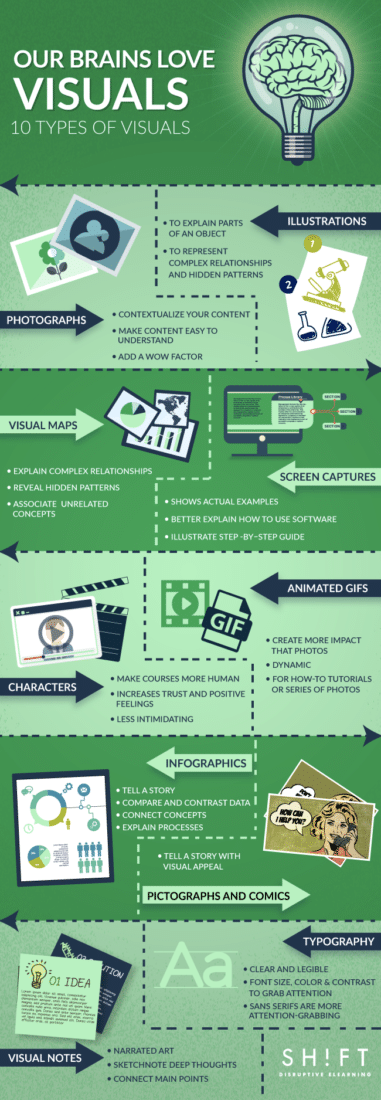A picture is worth a thousand words, as the saying goes. But there are scientific facts to back up that assertion as well. Visual information can be processed 60,000 times faster than text and is easier to remember. People only remember 20% of what they hear, but they remember 80% of what they see and do.

Vision trumps all senses. Pictures beat text as well, in part because reading is so inefficient for us. Our brain sees words as lots of tiny pictures, and we have to identify certain features in the letters to be able to read them. That takes time.
Brain Rules, John Medina
In our ever increasing digital world, thoughtful content and beautiful visuals can transform stories and messages into engaging content that grabs the attention of consumers. Content alone will only get the message so far. Using visual elements affects people both cognitively and emotionally; it connects the heart and the mind.
Research shows the power visuals can have in a business’s marketing campaign. According to Hubspot:
- Visuals are more popular than plain text in content marketing strategies.
- 45% of B2C marketers believe visual content is their most important type of content.
- After watching a video, 64% of users are more likely to buy a product online.

Branded Visual Content
Since social media is a large part of a digital marketing strategy, creating and sharing visual content on social media is now a must for a brand’s content mix. Research shows that posts with visual content perform much better than text-only posts. Similarly, videos receive more engagement than posts with static images.
An analysis of blogs in different industries conducted by Quicksprout revealed that articles with data-driven visuals such as charts and graphs receive more trackbacks—258% more than blog posts with other types of images. To increase engagement on your blog posts, time on site and brand recall, add more visual elements to the page.
Visuals aren’t just flashy; they can help define and complicate a brand’s identity by giving marketers another language to speak. And it’s not just logo design—branded visual content tells its own story through color, rhythm, humor, and tone. If you can show your audience who you are, you don’t have to waste time telling them over and over.
Engaging Your Audience With Visual Content: The 2019 Report, Emily Gaudette
Types of Visual Content
There are plenty of different visuals to incorporate into marketing campaigns. Mix it up to keep audiences engaged. Since only 20% of content is read (most people skim), adding in visual content creates breaks and assists in getting across the message. Here are some types of visual content:
- Photos
- Illustrations
- Visual Maps
- Screen Captures
- Animated GIFS
- Characters
- Infographics
- Pictographs and Comics
- Videos
- Slideshows
- Webinars and Presentations

Visual content is king but, more importantly, quality visual content reigns supreme.
Velocitize Talks with Amy Balliett
Best Practices for Creating Visual Content
Long gone are the days of access to beautiful graphics requiring a graphic designer and/or complex graphic design software. Online graphic design tools are a quick and easy way to get great visual content with less money and in less time.
Whether creating videos, graphics or editing images to use in marketing campaigns, here are some best practices to keep in mind:
- Create high-quality images or videos that enhance the campaign’s main message.
- Use brand fonts and colors in a visually appealing way (otherwise known as color psychology).
- Incorporate the company’s logo and/or website address when appropriate.
- Keep it simple. Visuals that are too convoluted or busy are distracting.
- Make sure the image or video educates, entertains or inspires the target audience.
Creating Visual Content

Here are some cost-effective graphic design tools:
- Canva: Online graphic design tool to create social media graphics, presentations, logos, videos, website graphics, email newsletters, and much more. It also allows teams to share accounts with a brand kit and content planner.
- Visme: Tool for creating infographics, charts and inspirational images.
- Adobe Spark: Tool for simple custom videos for social media, ad campaigns and more.
- Boosted: Tool for creating marketing and advertising videos.
- Easil: Drag and drop graphic design tool with a variety of templates that are not commonly used.
Visual content is no longer an option. Humans are visual creatures and with the constant oversaturation of information, in order to stand out brands must incorporate different types of visual content into their strategies. And as an added bonus, this visual content doesn’t have to be outsourced anymore due to the availability of easy-to-use design tools. Great content must have great visuals to create a brand story to remember.
Feature image by PublicDomainPictures from Pixabay



0 Comments